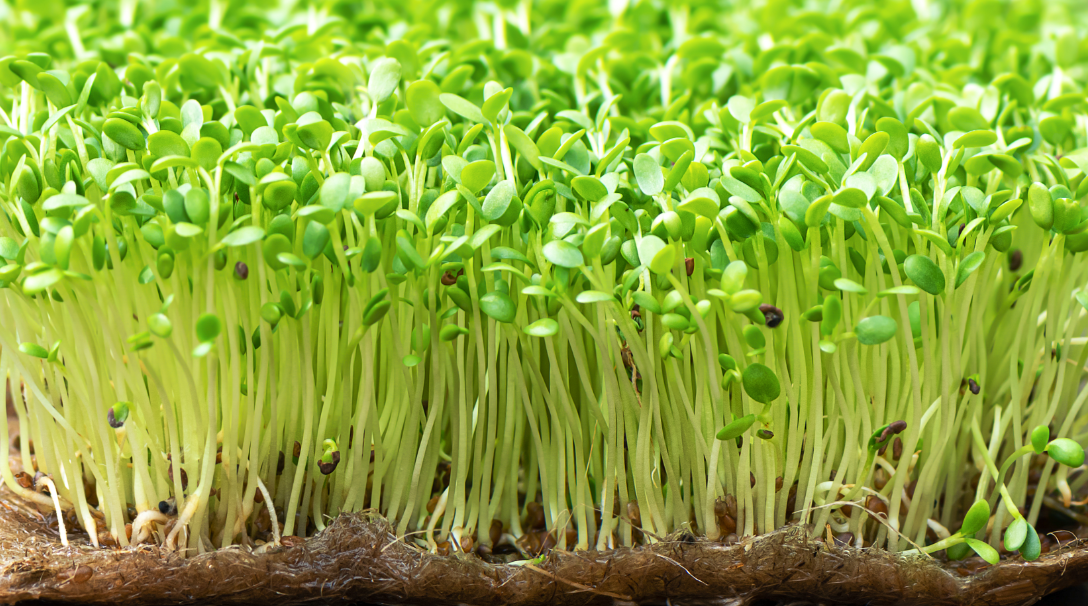Microgreens – food of the future
The results are encouraging
Microgreens are young vegetable plants that are harvested and eaten when they have reached their first leaves. The young vegetable is from 2.5 cm to 15 cm tall and is full of aromatic flavour with a high concentration of nutrients, vitamins and antioxidants. These are not sprouts.
Microgreens have three basic parts: a central stem, a cotyledon leaf or leaves, and typically the first pair of very young true leaves. They vary in size depending on the particular variety grown, with a typical size being (2.8cm – carrot – 10cm pea). When the plant grows above this size, it is generally no longer considered as microgreens, instead it is called a petite green. The average harvest time for fast growing plants, such as many fescues, is 10-14 days from seed to harvest.
Consuming of microgreens can be a rich source of nutrition and has the potential to be produced almost anywhere on the planet with minimal energy requirements.
Analyzes and further testing
Commercial cultivation of microgreens is appearing more and more frequently in local markets. The behavior of consumers is oriented towards the demand for high-quality microgreens, where the content of nutritional components of biomass is guaranteed. Guaranteed, replicable quality of crops with a verifiable amount of monitored nutritional components under standardized input conditions, can only be achieved on the basis of measurement, analysis, processing, validation and interpretation of the parameters of growing conditions and input elements (seeds, growing substrate, water, lighting, climatic and time growing conditions).
At MoraviaLab, we are engaged in the research and development of systems for vertical hydroponic cultivation of microgreens. In our systems microgreens grow on organic, certified mats, are nourished only with clean water, and we use high quality energy efficient lights. In the framework of research, we cooperate with universities and scientific institutions. We are involved in national and international projects with the aim of developing the innovative sector of vertical hydroponic plant cultivation in the Moravian-Silesian region. The goal and long-term vision of MoraviaLab is to set up the concept of a new local self-sufficient sustainable form of food production with high nutritional value.
Food of the future
Microgreens offer a healthy and natural way to incorporate nutritious vegetables into the population's diet. Microgreens are rich in nutrients, a concentrated source of vitamins, minerals and antioxidants. Compared to their adult counterparts, they contain up to 40 times more vitamins.
In the conditions of the northern hemisphere of the planet, it is necessary to ensure food self-sufficiency, and indoor vertical cultivation is an innovative solution that is gradually becoming known to scientists and the general public.
It has been scientifically proven, that after plucking/cutting some types of microgreens, vitamin C decreases by up to 90% within a short time (monitored for 24 h). Thanks to the innovative method of cultivation and production technologies (without fertilizers, pesticides and chemicals), microgreens can stay fresh for up to 7 days when stored properly. MoraviaLab's microgreens growing systems are energy-efficient, easy to operate, and by using them, it is possible to achieve high yields of quality microgreens with high nutritional value. Individuals and food establishments can also order regular subscriptions to have fresh microgreens available every day.
